Brushwork – The way paint is applied in a painting, describing the texture of the paint surface applied with a brush
To help remember what brushwork means, use the following mnemonic:
She used a yard brush to work (brushwork) the colour into her huge canvas, leaving distinct lines in the paint. It showed great texture on the paint surface.
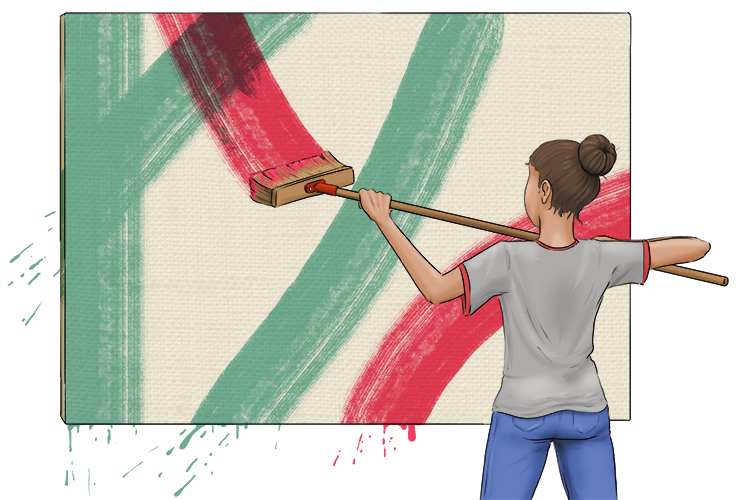
Brushwork refers to the visible way in which paint has been applied to an artwork with a brush. This could be through blending, spattering, heavy marks of wet paint, or many more variations. Brushwork can be a defining factor in some art, with artists using recognisable marks that they have become famous for, like Vincent Van Gogh and his small strokes of paint, or Claude Monet and his impasto dabs of thick oil paint adding layers of texture to his paintings.
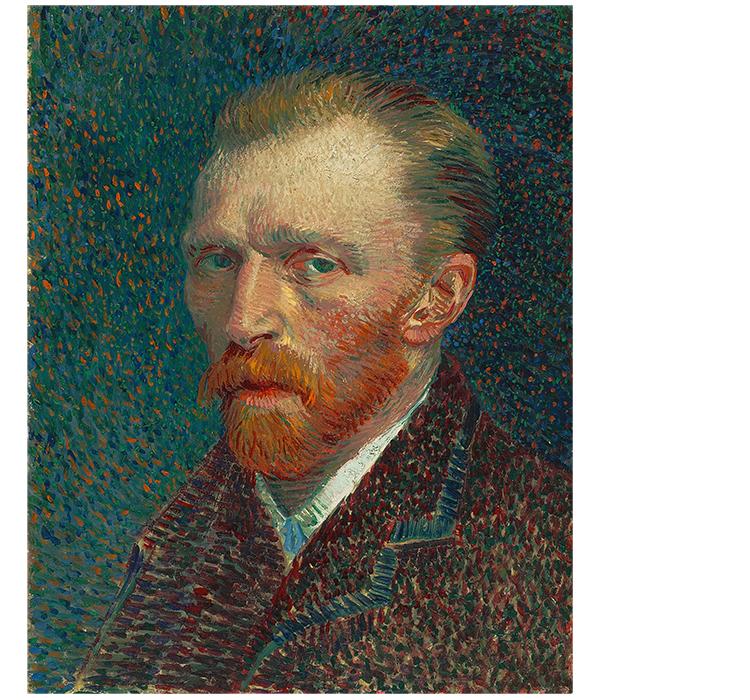
Vincent van Gogh, Self-Portrait, oil on board, 1887
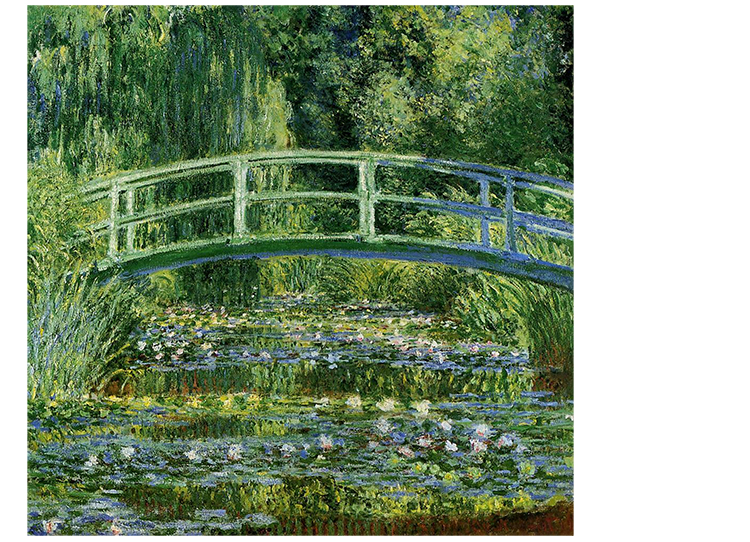
Claude Monet, Water Lilies and the Japanese Bridge, 1897–1899
Brushwork Project
For this project, we will use the variations in brushwork to add a sense of depth to an acrylic on canvas painting. Mirroring the natural haze you get with distance, we will use washy, soft brushwork for the furthest away elements of a painting, and gradually move towards harsh, thick brushwork for the closest elements. This process is used a lot in paintings to create an illusion of space.
To begin with, you need to find an image to copy for your painting. Try to find a scene with a lot of depth, such as a landscape, but one that still has prominent foreground features that you can pick out with bold brushwork. We have chosen the picture below of a red squirrel as the camera effects have left us with a blurred background, a detailed focal point and an almost over-focused foreground.
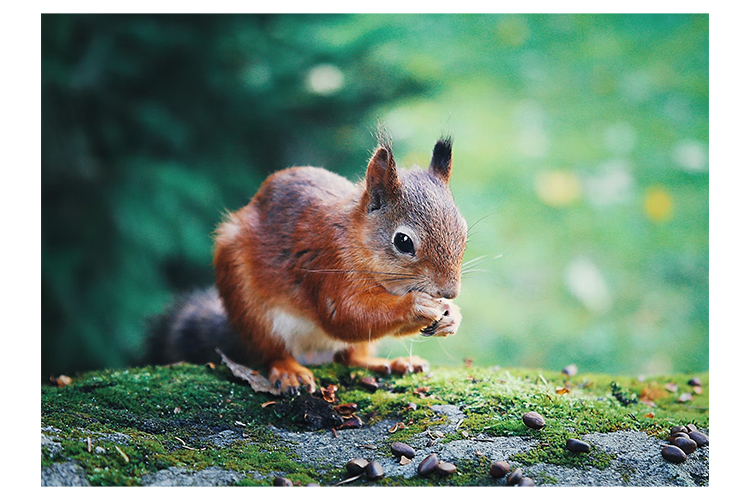
Using the Mammoth Memory grid method if you wish, lightly draw a simple outline sketch of your chosen image onto a canvas.
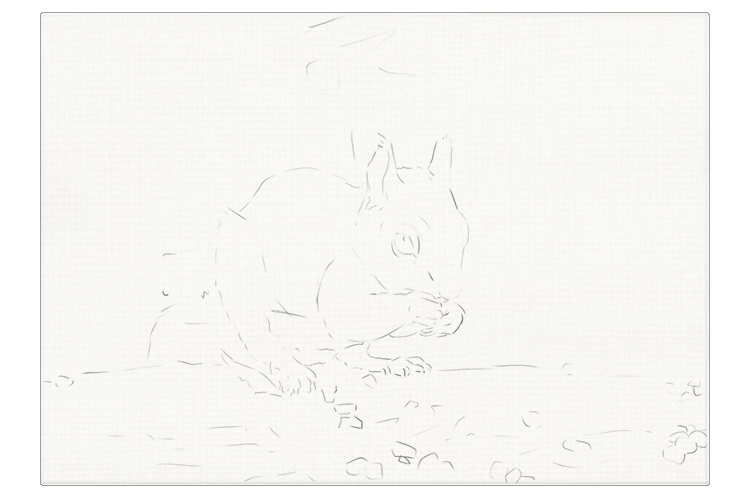
As we progress through the painting we will travel from the furthest areas in the background, through central area, then onto the foreground.
The background is out of focus so the brushwork here will be washy and soft. Start by applying washes of the colours you see with watered down acrylic paint.
When mixing colours, you can use the Mammoth Memory theory pages on colours, tint, shade, tone, hue and value.
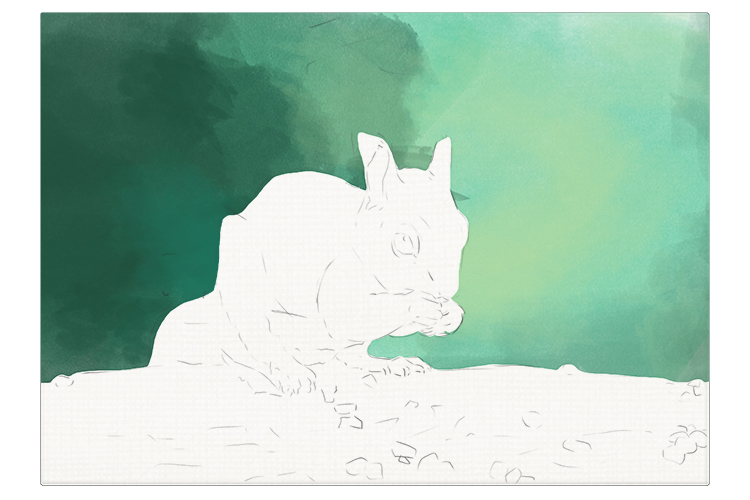
With a soft brush, add areas of the lighter and darker tones you see in the photograph.
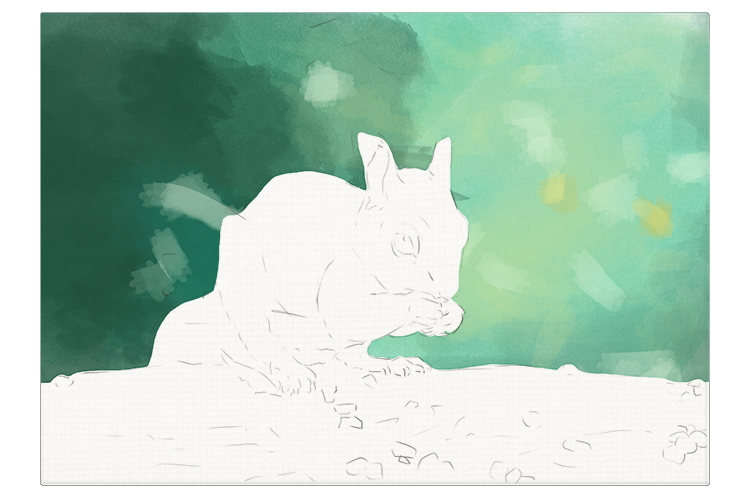
Using a dry brush, work into any areas you see where there are harsh lines and this will blur the colours together. You should be left with a blurred, luminous background similar to that of the photo. Remember we are not looking for something identical to the photograph, this is a painting showcasing an array of brush marks.
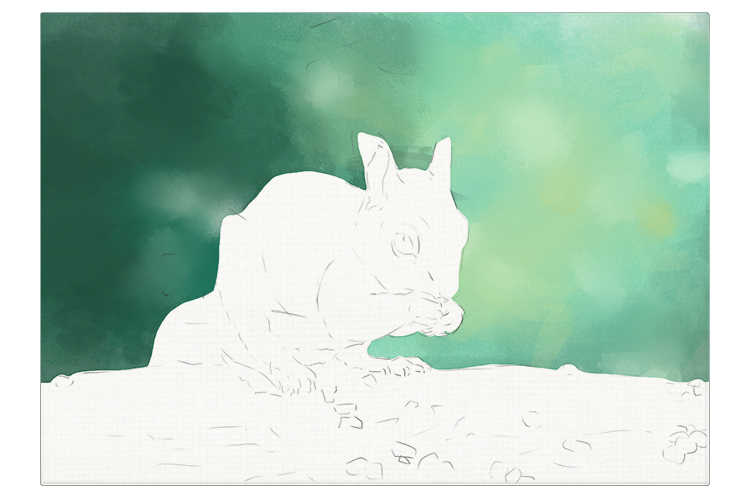
For the central area of the image (the squirrel) and the foreground (the ground), again apply areas of wash, this will act as a base layer to work on. Repeat the steps above, putting in some of the most prominent colours, but don't worry about blurring them together as you will be using thicker layers of paint on top of it.
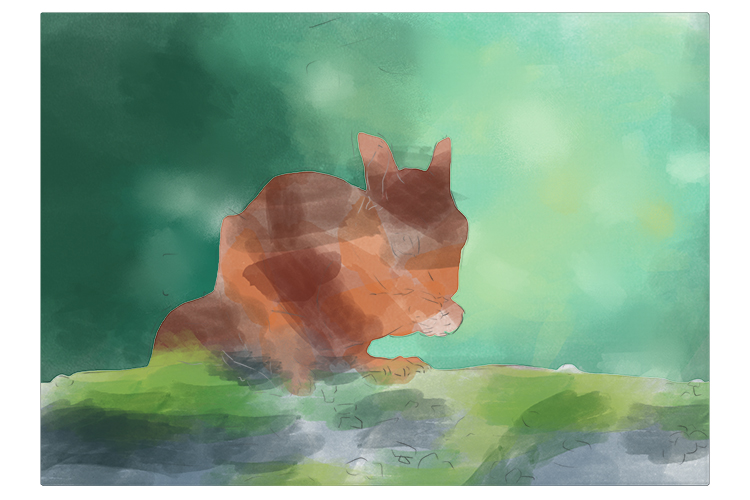
Begin using thicker paint to block in panels of colour on the mid and foreground. Don't be concerned about detail and be quite loose with your brushstrokes. Acrylic paint dries quickly so your brushwork strokes should show clearly which is what you require.
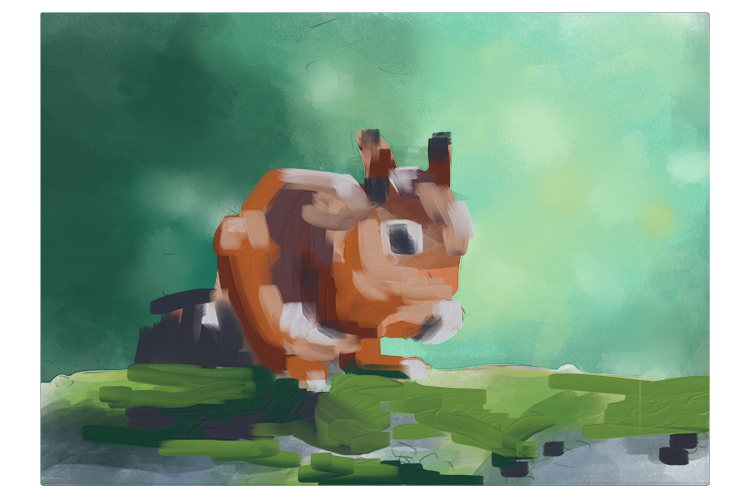
Try to pick out hidden colours that you may not initially assume are there. For instance, the grey rock our squirrel is sat on is actually a combination of blues, rather than solid grey.
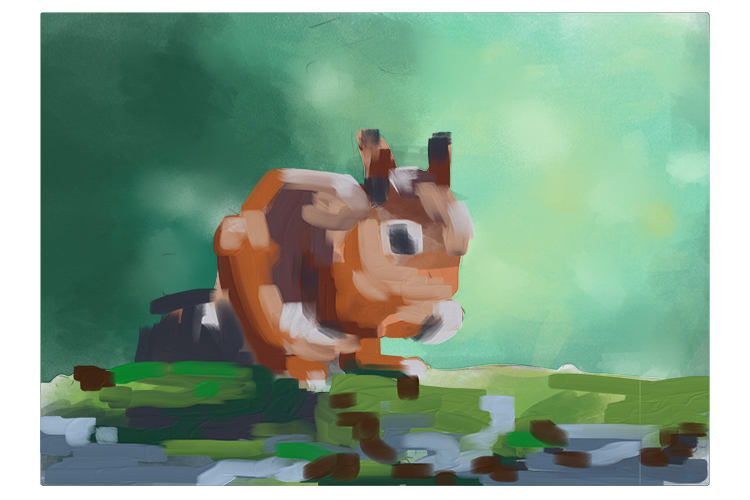
Your blocky underpainting can now aid you when applying more considered brush strokes. Using a smaller brush, but still in a blocky manner, start adding your darkest tones. Try to be a little faster with the following stages, as wet paint allows the edges of each brushstroke to mix a little, and it allows you to soften them with a dry brush (in a stage later on).

Working from dark to light, which is the best process with paintings like this, continue to add some of the darker tones.
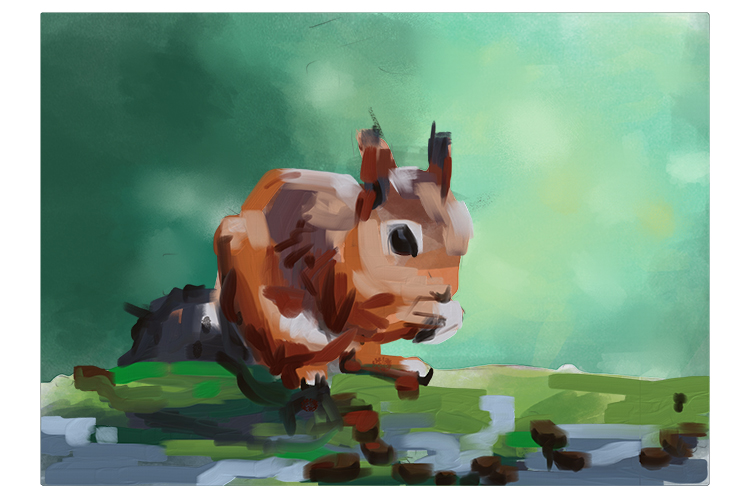
The lighter tones can now be added.
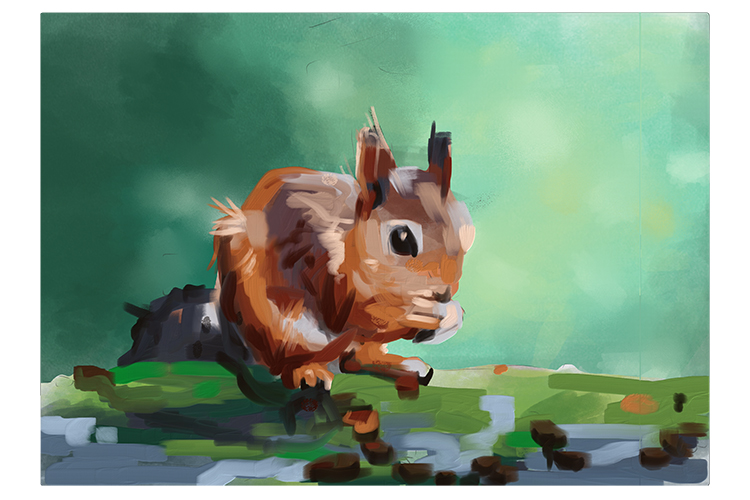
Using a dry brush, you can soften the edges of some areas, as we have with the squirrel's tail for example.
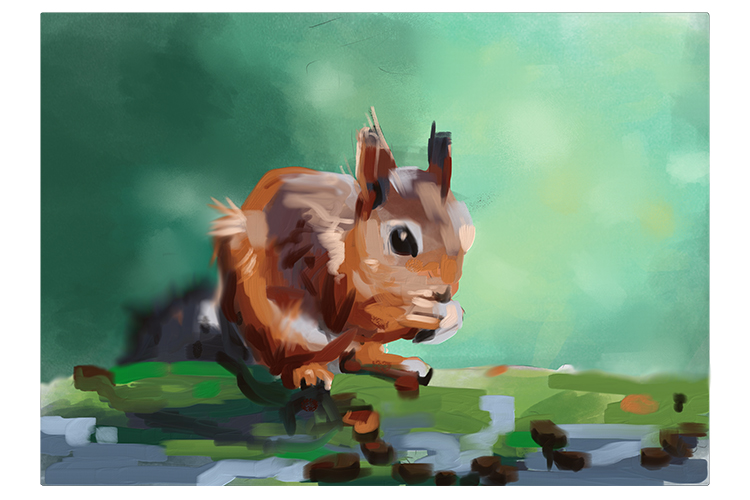
You can now add in any final touches with a thin brush, like the whiskers or any delicate hairs.
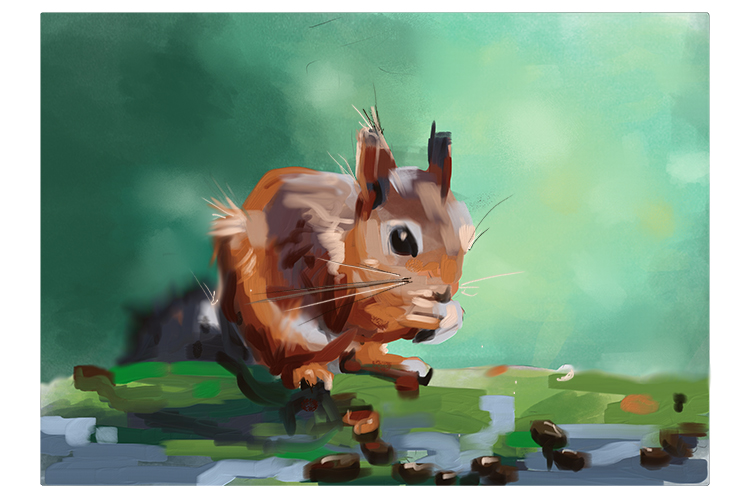
Brushwork.




